At Nexus, we are proud to be at the forefront of providing innovative healthcare solutions, including the iCare HIV 1&2 4th GEN Home Test Kit. This advanced self-testing kit, featuring the ¡CARE® ADVANCED HIV Ag/Ab Tri-line Rapid Test (Whole Blood), offers a reliable and user-friendly way to test for HIV in the comfort of your home. With a focus on convenience, accuracy, and accessibility, our kit empowers individuals to take control of their health with ease.
The iCare HIV Ag/Ab Tri-line Rapid Test uses a serological lateral flow chromatographic immunoassay to detect HIV-1 p24 antigen, HIV-1 antibodies, and HIV-2 antibodies from fingertip whole blood. The tri-line format provides easy-to-read results, helping individuals interpret their HIV status quickly and accurately.
HIV (Human Immunodeficiency Virus) is the virus responsible for AIDS (Acquired Immune Deficiency Syndrome). Anyone can be at risk for HIV, regardless of age, gender, or lifestyle. The most concerning aspect of HIV is that most infected individuals may not experience symptoms and can feel perfectly healthy, making it difficult to know their HIV status.
Common Routes of HIV Infection include:
The iCare HIV 1&2 4th GEN Home Test Kit offers a fast, reliable, and accurate solution for HIV screening at home. Key features include:
The iCare HIV 1&2 4th GEN Home Test Kit is designed to provide a simple and reliable way to test for HIV in the comfort of your own home. Each test kit includes everything you need for an accurate and easy testing experience:
| Sample Collection |
|---|
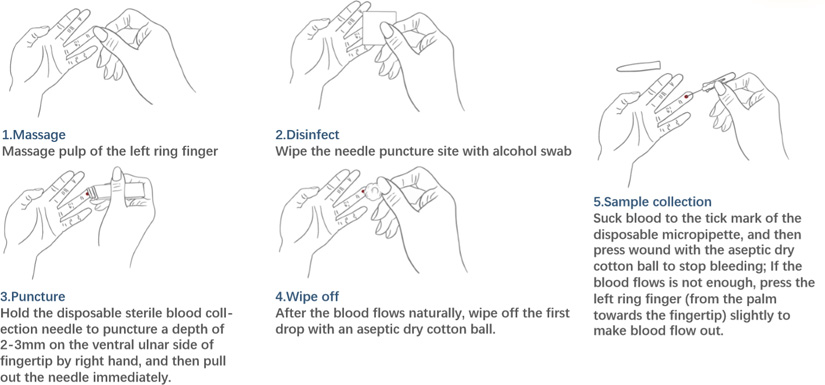
| Testing Process |
|---|
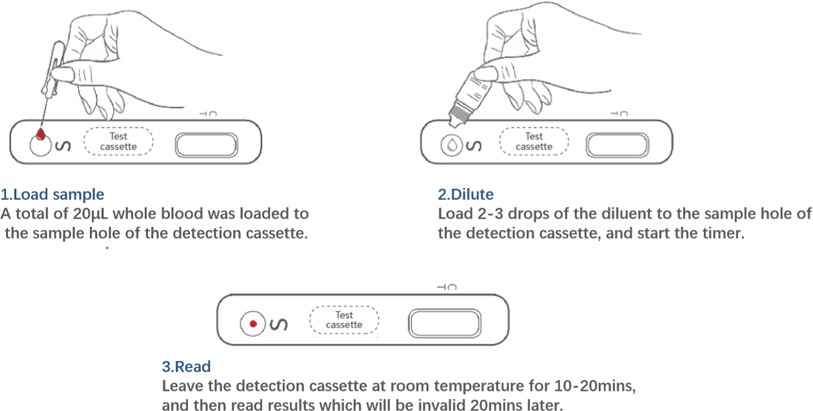
| Results |
|---|
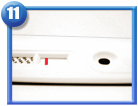
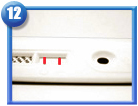
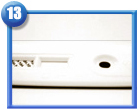
The HIV Ab/Ag (4th) Rapid Test, also known as the HIV 1&2 4th Gen Test, is a crucial diagnostic tool for detecting the Human Immunodeficiency Virus (HIV). This comprehensive guide aims to provide a detailed understanding of this fourth-generation test, highlighting its significance in HIV diagnosis and its role in managing HIV infections.
HIV AND THE EVOLUTION OF TESTING
Before delving into the specifics of the HIV Ab/Ag (4th) Rapid Test, it is essential to understand the basics of HIV. Human Immunodeficiency Virus is a virus that attacks the immune system, making timely testing crucial for early detection and management. Over the years, HIV testing has evolved, with the fourth-generation test representing a significant advancement.
KEY FEATURES OF THE HIV AB/AG (4TH) RAPID TEST
The HIV 1&2 4th Gen Test is designed to detect both the antibodies (Ab) and antigens (Ag) associated with HIV. This dual-detection capability makes it highly effective in identifying HIV infections during the early stages when both antibodies and antigens are present in the blood.
HOW THE TEST WORKS
The testing process involves a simple blood sample, typically obtained through a fingerstick or venous draw. The sample is then analyzed for the presence of HIV antibodies and antigens. The fourth-generation test’s specificity lies in its ability to detect the p24 antigen, a viral protein that appears in the bloodstream early after HIV infection.
ADVANTAGES OF THE HIV 1&2 4TH GEN TEST
HIV 4TH GEN TEST WINDOW PERIOD
The HIV 1&2 4th Gen Test is renowned for its exceptional sensitivity and ability to detect HIV infections early in their course. Central to its effectiveness is the concept of the window period, the interval between HIV infection and the test’s ability to detect markers of the virus. This period is significantly reduced due to the test’s capability to detect the p24 antigen, a protein produced by the HIV virus shortly after infection. By targeting both HIV antibodies and antigens, including p24, the 4th-generation test can identify infections sooner than previous generations, enhancing the likelihood of early diagnosis and timely intervention. This early detection not only facilitates prompt medical care and support but also plays a crucial role in reducing transmission rates by identifying individuals during the early stages of infection, when viral load may be high and transmission risk greatest. The shortened window period of the 4th Gen Test underscores its pivotal role in HIV prevention and management strategies worldwide, offering a critical tool in the ongoing fight against HIV/AIDS.
WHEN TO CONSIDER HIV AB/AG (4TH) RAPID TESTING
Understanding when to opt for the HIV Ab/Ag (4th) Rapid Test is crucial. Consider the following scenarios:
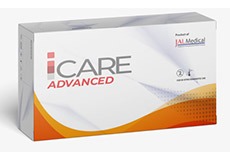
GLOBAL IMPACT AND ACCESSIBILITY
The global impact of the HIV 1&2 4th Gen Test underscores its critical role in the fight against HIV/AIDS, with widespread availability contributing to its significant reach across diverse regions. Efforts to improve access focus on ensuring that this advanced diagnostic tool is readily available in both urban centers and remote areas, where healthcare infrastructure may be limited. Initiatives by international organizations, governments, and NGOs have been instrumental in expanding accessibility, deploying the test in clinics, community health centers, and outreach programs. By enhancing access to early and accurate HIV diagnosis, particularly in regions disproportionately affected by the epidemic, the 4th-generation test supports timely intervention and management. This accessibility not only aids in reducing HIV transmission rates but also empowers communities to take proactive steps in controlling the spread of the virus, illustrating its crucial role in global public health initiatives.
INTERPRETING TEST RESULTS
Interpreting the results of the HIV 1&2 4th Gen Test involves understanding the significance of both antibodies and antigens. A positive result indicates the presence of either or both, signaling an active HIV infection. Consulting with healthcare professionals is crucial for accurate interpretation and guidance.
LIVING WITH HIV: TREATMENT AND MANAGEMENT
For those diagnosed with HIV through the HIV Ab/Ag (4th) Rapid Test, prompt initiation of antiretroviral therapy (ART) is vital. Managing HIV involves a comprehensive approach, including regular medical check-ups, adherence to medication, and lifestyle adjustments.
COMMUNITY PERSPECTIVES AND STIGMA
Addressing community perspectives and stigma surrounding HIV testing is crucial in promoting widespread testing uptake and reducing the stigma associated with HIV/AIDS. Community education plays a pivotal role in dispelling myths, misconceptions, and fear surrounding HIV testing. By raising awareness about the reliability and confidentiality of HIV tests, community education fosters an environment where individuals feel empowered to get tested without fear of judgment or discrimination. Moreover, education initiatives promote an understanding of the benefits of early detection and treatment, emphasizing that HIV is a manageable condition with timely intervention. Through open dialogue and targeted outreach programs, communities can actively challenge stigmatizing attitudes and encourage supportive environments for individuals living with HIV. By promoting a culture of acceptance and inclusivity, community education not only facilitates increased testing rates but also plays a critical role in achieving broader public health goals related to HIV prevention and care.
ADVANCEMENTS IN HIV TESTING
Advancements in HIV testing have continued to evolve beyond the 4th generation, ushering in new technologies and approaches aimed at enhancing accessibility, accuracy, and convenience. One notable advancement is the development of rapid point-of-care tests (POCTs), which provide results in minutes, often at the site of patient care. These tests are crucial for reaching underserved populations and increasing testing uptake. Additionally, nucleic acid testing (NAT) has revolutionized HIV diagnosis by detecting viral RNA or DNA directly, offering unparalleled sensitivity and specificity. NAT is particularly valuable in settings requiring early infant diagnosis or monitoring of HIV viral load in patients on antiretroviral therapy. Emerging technologies like smartphone-based testing platforms and self-testing kits further democratize access to HIV testing, empowering individuals to take charge of their health discreetly and conveniently. These advancements not only expand testing capabilities but also support global efforts to achieve UNAIDS’ 95-95-95 targets by 2030, aiming for 95% of people living with HIV to know their status, 95% of diagnosed individuals to receive sustained antiretroviral therapy, and 95% of those on therapy to achieve viral suppression.
COUNSELING AND SUPPORT SERVICES
Receiving a positive HIV diagnosis can be emotionally challenging. Counseling and support services play a crucial role in helping individuals navigate the emotional and psychological aspects of living with HIV. Support networks contribute significantly to the overall well-being of those affected.
INTEGRATION WITH PUBLIC HEALTH PROGRAMS
The integration of the HIV 1&2 4th Gen Test into public health programs plays a pivotal role in broader HIV/AIDS initiatives worldwide. This advanced diagnostic tool is strategically incorporated into national and regional healthcare frameworks, supporting efforts to achieve key HIV/AIDS targets such as UNAIDS’ 95-95-95 goals. Within public health programs, the test is utilized for routine screening in healthcare settings, targeted testing campaigns in high-risk populations, and outreach initiatives to underserved communities. Its role extends beyond diagnosis to include monitoring HIV prevalence trends, assessing the impact of prevention strategies, and guiding resource allocation for treatment and care services. By integrating the 4th-generation test into comprehensive HIV/AIDS programs, governments and organizations strengthen their capacity to detect infections early, link individuals to appropriate care, and ultimately mitigate the impact of HIV on public health outcomes globally.
PREVENTING HIV TRANSMISSION
Understanding one’s HIV status is a key step in preventing transmission. Safe practices, including the use of condoms and pre-exposure prophylaxis (PrEP), are essential. Open communication with sexual partners is also vital in preventing the spread of HIV.
ROLE IN HIV PREVENTION STRATEGIES
The role of the HIV 1&2 4th Gen Test in HIV prevention strategies is pivotal, complementing safe practices and pre-exposure prophylaxis (PrEP) by focusing on early detection and targeted testing. By detecting both HIV antibodies and the p24 antigen, the test identifies infections during the acute phase when viral load is high and transmission risk is elevated. This capability not only enables prompt initiation of antiretroviral therapy (ART) for those diagnosed but also facilitates timely counseling and interventions to prevent onward transmission. In settings where PrEP is implemented, the 4th-generation test plays a crucial role in routine screening to ensure that individuals on PrEP remain HIV-negative and are appropriately monitored. Moreover, its integration into broader public health programs supports efforts to reduce HIV incidence by identifying and linking infected individuals to care, ultimately contributing to the overall goal of ending the HIV/AIDS epidemic.
COMMON MISCONCEPTIONS ABOUT HIV TESTING
Dispelling myths surrounding HIV testing is essential for encouraging individuals to undergo testing without fear or stigma. Education on the reliability and confidentiality of HIV tests contributes to a more informed and empowered community.
FUTURE DIRECTIONS IN HIV TESTING
Looking ahead, the future of HIV testing holds promise with ongoing advancements poised to revolutionize diagnostic capabilities. Emerging technologies are focusing on enhancing the sensitivity, specificity, and accessibility of HIV tests. Innovations include next-generation rapid tests that combine ease of use with improved accuracy, potentially reducing the reliance on laboratory infrastructure. Furthermore, there is increasing exploration into novel biomarkers and testing methodologies, such as point-of-care molecular tests and novel antigen detection strategies, which could further streamline testing processes and expand testing capabilities. Smartphone-based testing platforms are also gaining traction, offering decentralized testing options that empower individuals to monitor their HIV status discreetly and conveniently. These advancements not only aim to improve early detection rates but also to support global efforts in achieving ambitious HIV/AIDS targets. As research and development continue to drive innovation in HIV testing, the future holds promise for more efficient, accessible, and reliable testing technologies that will play a crucial role in the ongoing fight against HIV/AIDS worldwide.
CONCLUSION
In conclusion, the HIV Ab/Ag (4th) Rapid Test is a powerful tool for early detection of HIV, allowing for timely intervention and management. Understanding its features, advantages, and the broader context of living with HIV is crucial for individuals, healthcare professionals, and the community at large.
 Malaysia
Malaysia